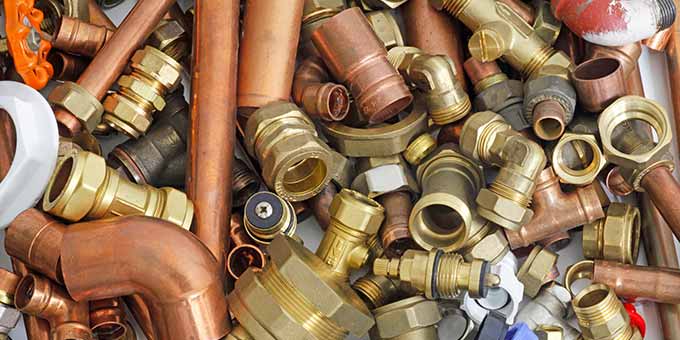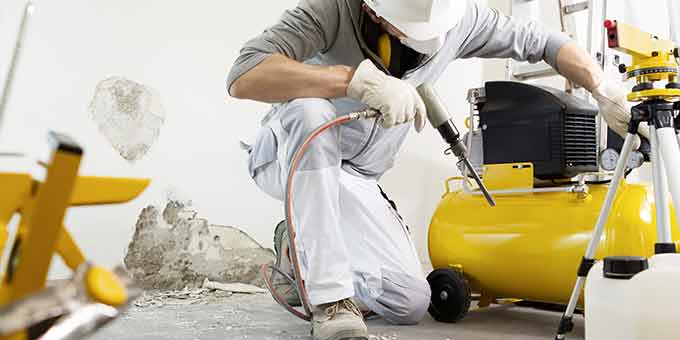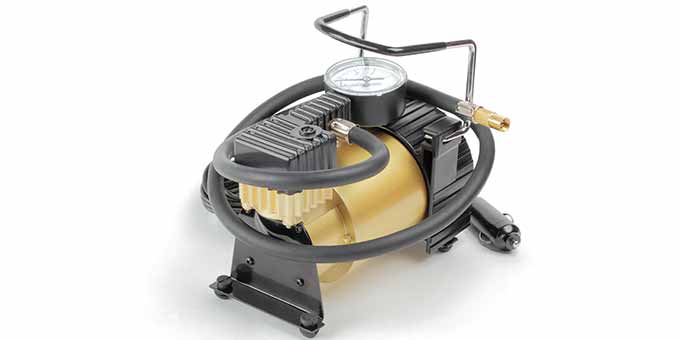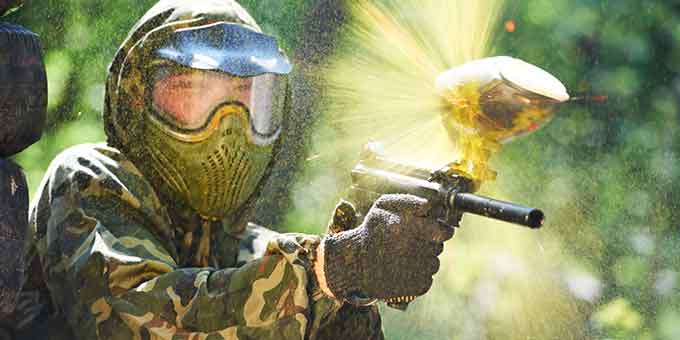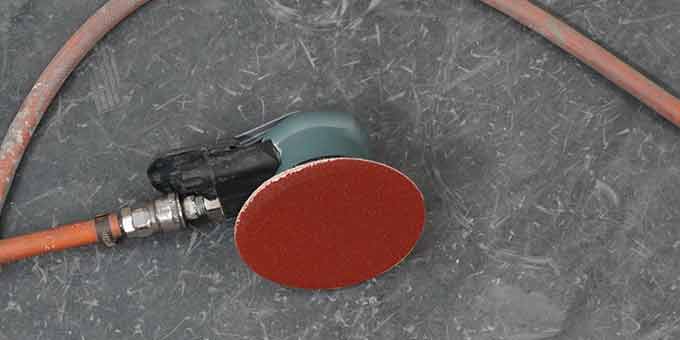The right fittings for air compressors are critical for keeping the device functioning smoothly and providing the air pressure you need for your activities. Knowing the different air compressor fitting types is crucial when picking the correct components for the equipment, so we put up this guide to assist you in figuring out what styles and sizes you are going to need.
What Are Air Compressor Fittings?
Air compressor fittings are accessories that keep the compressor’s pressure and air flowing smoothly. Every fitting serves a distinct purpose; however, they are all necessary for maintaining the condition and functionality of your system.
When the time comes to replace your air compressor’s fittings, start by determining the size you require. The thread size of numerous air compressor fittings is determined by the National Pipe Tapered (NPT) standard. You must measure and figure out the size of the pipes for the fitting with the use of an NPT chart. Moreover, you can use this information to find the different air compressor fittings you might want.
What Fittings Do I Need for Air Compressor Systems?
The various types of fittings you need for an air compressor include:
- Couplers
- Plugs
- Connectors
Let’s take a look at these in further detail.
Couplers
Couplers make connecting an air compressor or an air tank to your air hose easier. The coupler closes when you unplug the air hose, preventing air from getting out. Industrial, automotive, ARO, and V-style couplers are just a few of the varieties available.
Manual and automatic couplers are the two primary coupler types. Automatic fittings enable you to easily connect your airlines. When the hose or the ‘male’ component is withdrawn, they swiftly seal the air opening, causing the O-ring or the ‘female’ connector to close fully. To put in and withdraw the air hose from a manual coupler, you need to pull on the coupler’s collar. Hold the line securely when removing it; the coupler quickly ejects the unit as pressurized air leaves.
Plugs
Plugs and couplers go together. You must use the same design of coupler and plug as you used for the coupler. The size of the flow, or the air volume the plug can handle, is the most important detail to consider when choosing a plug. A plug with a 1/4-inch or 1/2-inch flow size is required by most ordinary air compressors, with the 1/4-inch being the most common.
Plugs are available in industrial, automotive, V-style, and ARO designs, just like couplers. While industrial and automotive varieties are more widespread and simpler to locate at hardware stores, the kind of fitting you choose is a matter of personal opinion. When purchasing a plug, the most essential aspects to consider are fit and quality. To avoid leaks of compressed air, choose a well-known brand.
Connectors
Since there are numerous types of compressed air fittings, manufacturers have realized how challenging it may be to locate the exact one you require. As a result, manufacturers have started to color-code couplers and connectors. You might come across a business that coordinates colors with the following categories, for instance:
- Red denotes automotive
- Green indicates industrial
- Yellow refers to V-style
- Blue represents ARO
What Are the Different Sizes of Air Compressor Fittings?
Metric fittings resemble NPT fittings in appearance, and a 1/4′′ NPT fitting has a similar diameter to a 1/4′′ Metric fitting; however, they are not interchangeable. The thread tip-to-tip distance differs significantly between metric and imperial fittings. As a result, metric thread diameters are incompatible with NPT equivalents of the same size.
The NPT fitting standard is frequently followed by air hose couplings and other connectors that are frequently used for air compressors. Furthermore, the NPT standard is a US standard for tapered threads that are used in various pipes and fittings.
This fitting standard enables you to choose equipment that is measured in standard types of air fittings, ensuring that it works with other fittings as well as any preinstalled couplers that came with the compressor.
Since non-standard fittings may not offer an appropriate seal and might let air escape from the air hoses and connectors, the thread size is crucial. This, of course, affects the efficiency of the system, as well as the airflow and pressure that the air compressor can supply to your pneumatic equipment.
While knowing air compressor fittings is very simple, understanding the NPT fitting chart and its link to pipelines and all sorts of connectors can be beneficial. The outside diameter of the pipe and the threads per inch are commonly listed on NPT charts in inches. Usually, manufacturers claim that their NPT fittings correspond to these specifications with extreme precision.
The most commonly found sizes for these fittings are:
- 1/8-inch (27 threads per inch and an outside pipe diameter of 0.405 inches)
- 1/4-inch (18 threads per inch and an outside pipe diameter of 0.540 inches)
- 3/8-inch (18 threads per inch and an outside pipe diameter of 0.675 inches)
- 1/2-inch (14 threads per inch and an outside pipe diameter of 0.840 inches)
- 3/4-inch (14 threads per inch and an outside pipe diameter of 1.050 inches)
- One-inch (11.5 threads per inch and an outside pipe diameter of 1.315 inches)
Many air hoses come with couplers already placed, allowing you to connect the compressor to the tools right away. Any additional couplers are the same size as the currently installed fitting.
There are many different types of air fittings; however, most tools use one of only a few connectors. The majority of these air tools use a 1/8′′ or 1/4′′ connector, although the size might not always be consistent with these standards. Thus, the best approach to figure out what size connector you have is to search the part unit online.
Measure the diameter of the opening, directly across the middle of the port, to determine the size of the tool’s port opening. This is the pipe size, and you can now select an appropriate connector as you have a precise measurement.
What Are the Different Types of Air Compressor Fittings?
Couplers and compressed air plugs are two types of air compressor fittings that are required for connecting pneumatic tools to an air hose. We mentioned these above but let’s look at them in further detail.
Couplers
Compressed air couplers are a member of the connectors and couplers tag team for compressed airline connections. This sort of fitting, which is usually female, connects directly to the compressor or airline. Couplers are the “receiving fitting,” as they are made of the same elements as the male counterparts. The plug connects to the pneumatic tools it is powering, while the coupler connects to the hose.
If you thread the airline connector in the supply port of the air tools, which you want in order to be able to link a compressed air supply as necessary, those connectors enable you to quickly connect the air tool to a mating coupler on the air hose.
These accessories are available in either steel or brass materials.
Read More: Air Compressor Hoses
Compressed Air Plugs
Compressed airline plugs are designed to engage with a matched coupler on the air supply line, allowing for secure connections between the pair. This permits compressed air to pass through the workplace or machine’s air tools or air-using systems.
Because airline connectors are affordable devices that only cost a dollar or two each, employing them in large quantities for rapid air tool connections is the way to go. Thread a connector into a supply port of each air tool you own, and they are ready to use right away.
Changing the supply air hose from one air tool to another is straightforward and quick when you have a connector placed in every air tool in the workplace. You can get back in business by unplugging one tool’s air connector from the airline coupler and plugging another air tool’s connector on the same airline into the same coupler.
Automotive and industrial plugs are rated according to the flow sizes they cope with. A quarter-inch configuration is the most frequent, but 1/2′′ and 3/8′′ are also common. This number, often known as a rating, indicates how much air volume the plug can handle.
These accessories are available in either steel or brass components.
Consider Pressure Ratings
Pressure ratings are commonly included with air fittings to help prevent leaks and pressure decreases. Couplings and clamps can be subjected to pressures that exceed their ratings if the system is not thoroughly assessed. If there are unusual pressure spikes inside the unit, this might go undetected.
If the fast-release couplings are subject to spikes, the locking parts of the component are going to eventually fail. You can avoid this by making sure the coupling you choose for the job has a higher rating than the expected max pressure. Any component of the system that restricts airflow can cause problems throughout the mechanisms of your pneumatic tools.
The Bottom Line
It’s just as vital to pick the correct fittings as it is to choose the right air compressor. This simple guide to steel and brass pressure or air compressor fittings should help you start your journey; however, if you need more help, our team is here to assist you. Our air pressure experts can answer your inquiries and point you in the right direction for the tools you need to keep your air compressor running well.


